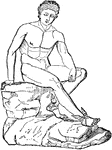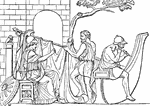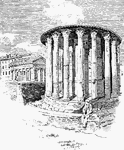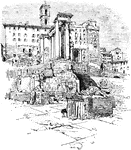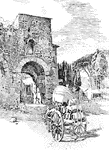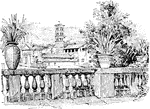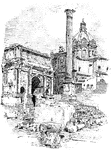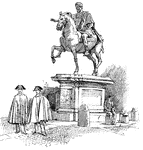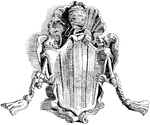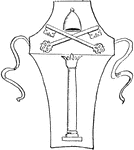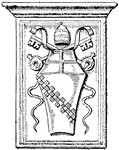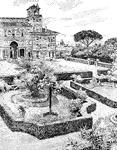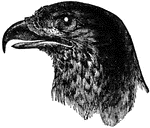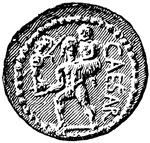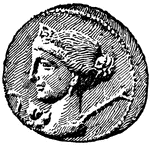
Cyathus
"A Greek and Roman liquid measure, containing one-twelfth of the sextarius, or .0825 of a pint English.…
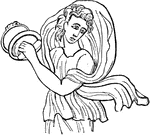
Cymbalum
"A musical instrument, in the shape of two half globes, which were held one in each hand of the performer,…
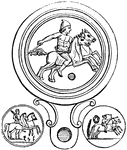
Desultor
"A rider in the Roman games, who generally rode two horses at the same time, sitting on them without…
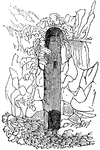
Emissarium
"An artificial channel formed to carry off any stagnany body of water, like the sluices in modern use.…

Fastigium
"An ancient Greek or Roman temple, of rectangular construction, is terminated at its upper extremity…

Columns of Domitian
"The columns of cipollino, which belonged to the Palace of Domitian." — Young, 1901
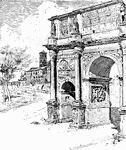
Arch of Constantine
"This arch is the most modern and the best preseved of all the buildings which remain of the Imperial…
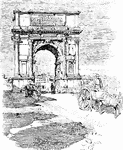
Arch of Titus
"In the time of Trajan, the Arch of titus and the Colossus of Nero (a gilt bronze statue 120 feet high),…

Columns of Temple of Castor
"Columns of Temple of Castor, Temple of Augustus, and Palatine Hill." — Young, 1901

Cloister of the Lateran
"The Benedictine system enjoined three virtues as essential; solitude, humility, and obedience." —…
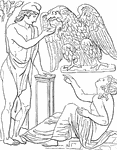
Ganymede and Eagle
"From an ancient sarcophagus, represents Ganymede giving drink to the eagle, or bird of Jobe, and Hebe…
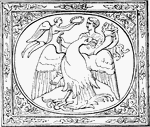
Apotheosis of Germanicus
"By a beautiful image, the mother herself, who is so deeply interested in the fortunes of her son, is…
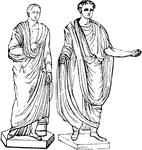
Roman Togas
"The following cuts represent, the first more ancient, and the second the later mode of wearing the…
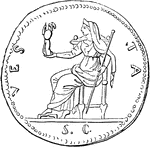
Coin of Vesta
"Represents Vesta seated on a throne, with the Palladium of Rome in her hand." — Anthon, 1891

Temple of Jupiter
"The door in front of a temple, as it reeached nearly to the ceiling allowed the worshippers to view…
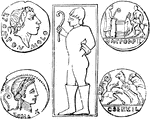
Sculpture and coins
"The figure in the middle of the following illustration is from a most ancient specimen of Etruscan…

Roman hinges
"The Greeks and Romans used hinges exactly like those now in common use. The following cut exhibits…

Statue of Phocion
"A more graceful mode of wearing the palla was to attach it by means of a brooch, and allow…

Banqueting room
"The Roman people reclined at their meals. On each couch there were commonly three persons. They lay…
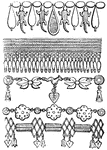
Monilia
"A necklace. Necklaces were worn by both sexes among the most polished of those nations which the Greeks…

Ocrea
"A greave, a leggin. A pair of greaves was one of the six articles of armour which formed the complete…

Ocrea
"A greave, a leggin. A pair of greaves was one of the six articles of armour which formed the complete…

Hawk Leg
The leg and foot of a hawk, shwering the method of attaching the Bells and Jesses. a, the end of the…
